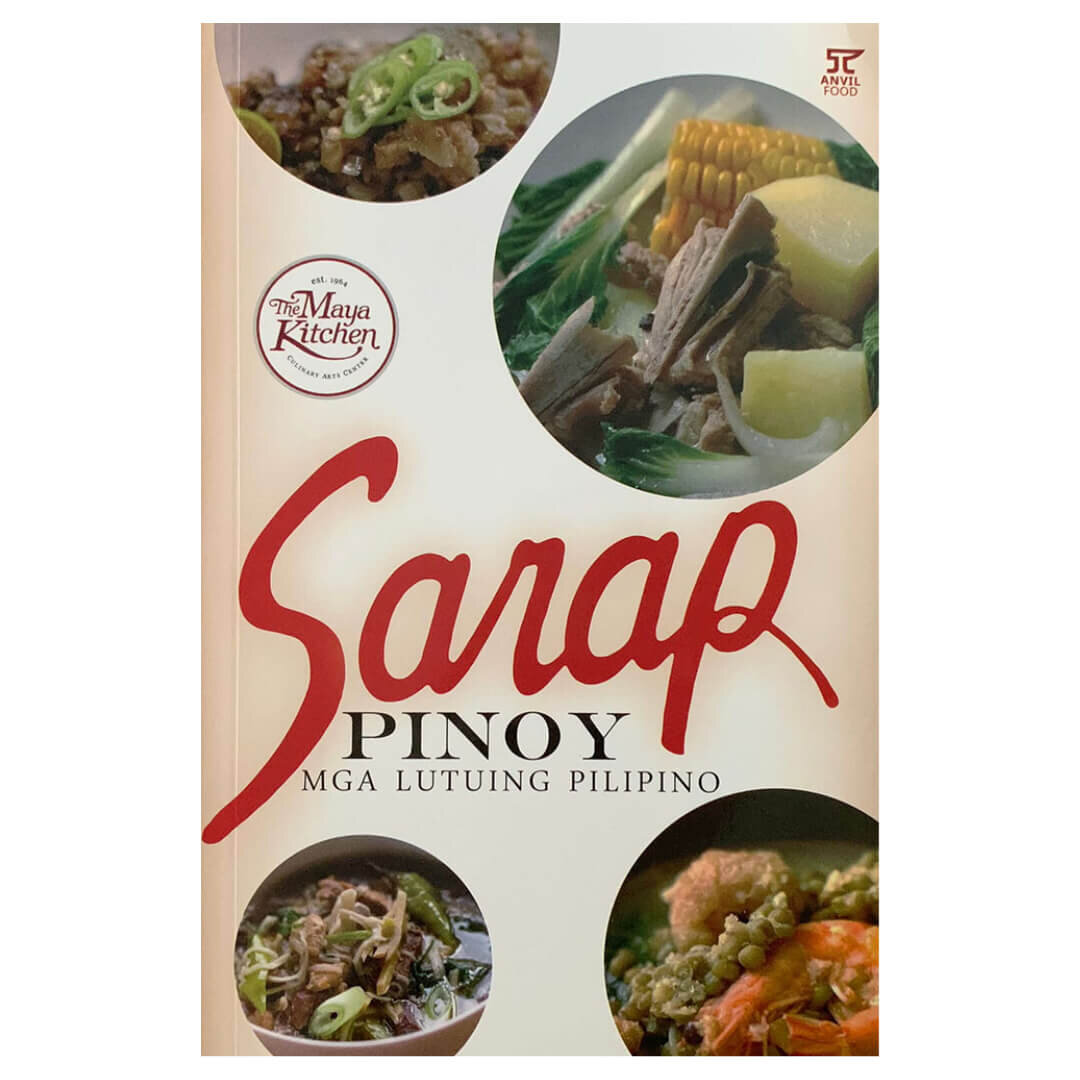Learning about a new language, you know, often brings you face to face with words that hold so much more than just their simple definition. It's almost like they carry a little piece of a culture's heart and soul. These are the words that truly show how people feel and what they care about.
We're going to look closer at one such word from the Tagalog language, "sarap." This word, you see, is something that many people use every day, and it has a pretty rich background. It's not just a word you say; it's a feeling, a way of describing something that brings a lot of good sensations.
So, what does "sarap" really mean in Tagalog? Well, it's about more than just food, though that's where many people first hear it. It's about a pleasant experience, a good taste, and even a deeper connection to how Filipinos express enjoyment. We will look at its various uses and connections, giving you a clearer idea of this word's importance.
Table of Contents
- What is the True Feeling of Sarap?
- Beyond Just Taste - The Broader Sarap Meaning Tagalog
- How Does Sarap Connect to Pleasure and Desire?
- Sarap as a Cultural Expression - More Than Just a Word
- Understanding the Nuances - Is Sarap Always Masarap?
- Common Ways People Use Sarap - Everyday Sarap Meaning Tagalog
- What Are Some Examples of Sarap in Sentences?
- Slang and Playful Forms of Sarap
- Is Sarap Only About Food?
What is the True Feeling of Sarap?
When someone mentions "sarap," the first thought for many, you know, often goes straight to food. It points to a good flavor, a pleasant taste, something that makes your mouth happy. This is the very basic way people start to get a handle on the "sarap meaning Tagalog." It's that feeling you get when something tastes just right, or even better than you expected.
The word "sarap" itself, as a root, suggests this quality of deliciousness. You might hear it in phrases that speak to how tasty something is. It's a way of saying, "This food is really something special," or "I really enjoy the way this tastes." It captures the essence of what makes eating enjoyable, a sort of yummy sensation that lingers. So, in its simplest form, it's about the pleasure derived from what you consume, a very fundamental aspect of daily life for many.
There are related terms that come from this root, like "linamnam" and "ka sarap an," which also point to this idea of deliciousness or tastiness. "Linamnam," for example, often speaks to a savory, rich flavor, a deep sense of goodness in food. "Ka sarap an," on the other hand, might describe the state of being delicious, the quality itself. These terms, you see, help to paint a more complete picture of the core "sarap meaning Tagalog" when it comes to food and flavor.
Beyond Just Taste - The Broader Sarap Meaning Tagalog
While food is a very common connection, the "sarap meaning Tagalog" reaches further than just what you eat. It's a word that can describe a feeling of pleasure or enjoyment in a wider sense. It's about sensations that feel good, not just on your tongue, but in other ways too. This broader application makes it a very versatile word in conversations.
How Does Sarap Connect to Pleasure and Desire?
The word "sarap" also links to concepts like "gana" and "gusto." "Gana" often refers to appetite or desire, a strong want for something. "Gusto," too, means to like or to want. When you say something is "sarap," you're often expressing a liking for it, a desire for more, or that it provides a sense of contentment. It's about finding something pleasing, something that truly hits the spot.
So, it isn't only about the physical act of tasting. It extends to the feeling of satisfaction, the joy of an experience. For example, a comfortable chair might feel "sarap" to sit in, or a good nap could be described with the same word. It's about that feeling of well-being, that something is just right, or even brings a sense of joy. This shows how flexible the "sarap meaning Tagalog" truly is, adapting to various pleasing situations.
Sarap as a Cultural Expression - More Than Just a Word
Many people consider "sarap" a slang term that first appeared in the Philippines, often used to describe something tasty or pleasurable. However, the true "sarap meaning Tagalog" goes beyond simply describing food or physical feelings. It is a word that captures the very spirit of Filipino culture, its history, and how people see themselves. It’s a word that, in some respects, tells a story about the Filipino way of life.
The way people use "sarap" often reflects a deep appreciation for life's simple joys. It's about savoring moments, whether it's a delicious meal shared with loved ones, a relaxing afternoon, or even the feeling of success after hard work. This word, you know, becomes a way to express that feeling of contentment and happiness that comes from these experiences. It shows a culture that finds value in the pleasant things around them, big or small.
It's not just a descriptor; it's an exclamation, a way to share joy. When someone says "Sarap!" it's an immediate, heartfelt expression of delight. This communal sharing of positive feelings is very much a part of Filipino social interactions. The "sarap meaning Tagalog" then becomes a window into how people connect, celebrate, and find joy together, a rather important part of their daily lives.
Understanding the Nuances - Is Sarap Always Masarap?
When you are getting to know Tagalog, one of the interesting things is seeing how different cultures talk about sensory experiences, especially taste. Words like "masarap" and "sarap" are very important when you describe food, but they have subtle differences that are worth knowing. They are not always interchangeable, which is a bit of a key point to remember.
"Masarap" is typically an adjective, meaning "delicious" or "tasty." It describes a thing. For example, you might say "Masarap ang ulam," which means "The viand is delicious." Here, "masarap" directly modifies the "ulam" (viand). It tells you about the quality of the food. This is its proper form when you want to describe something as having a good taste.
"Sarap," on the other hand, is usually a noun, meaning "deliciousness" or "tastiness." It's the quality itself. While it can be used alone as an exclamation, like "Sarap!" (meaning "Yummy!"), it often needs a little help when you're talking about a specific item. For instance, you would say "Ang sarap" to mean "It's delicious." The "ang" before "sarap" makes it function more like an adjective in that context, pointing to the deliciousness of something. It's a subtle but important rule, similar to how "maganda" (beautiful, adjective) and "ganda" (beauty, noun) work. You'd say "Ang ganda" to mean "It's beautiful." So, while they are related, their roles in a sentence are different, which is something to keep in mind when using "sarap meaning Tagalog."
Common Ways People Use Sarap - Everyday Sarap Meaning Tagalog
People use "sarap" in many everyday situations, showing just how common and adaptable the word is. It's a casual way to express enjoyment, a word that fits comfortably into many conversations. You hear it often in informal settings, among friends and family, which is how you might expect it to be used.
What Are Some Examples of Sarap in Sentences?
A very common phrase you might hear is "Tutulò ang laway mo sa saráp!" This literally means "Your saliva will drip because of the deliciousness!" It's a vivid way to say something is so incredibly tasty that it makes your mouth water. This example, you know, really shows the intensity of the "sarap meaning Tagalog" when applied to food that is particularly appealing.
Another way people use it is simply as an exclamation. If someone hands you a plate of something wonderful, a simple "Sarap!" communicates immediate pleasure and appreciation. It's short, sweet, and gets the point across very quickly. This is often shortened from "Masarap," but it carries the same strong feeling of enjoyment. So, you can just say it on its own, which is quite handy.
The word can also be part of longer descriptions. For instance, if you're talking about seafood, you might hear phrases like "ansarap neto" (this is so delicious) or "namnam," which is another word for deliciousness or a very good taste. These examples highlight how the "sarap meaning Tagalog" is woven into daily talk about meals and good food, making it a very natural part of conversation.
Slang and Playful Forms of Sarap
Like many words that are used a lot, "sarap" has also given rise to some playful and slang versions. These forms often come from rearranging syllables or just using a slightly different sound to make the word feel more casual or trendy. It's a way people have fun with language, you know, making it their own.
One such example is "rapsa." This word is a reversal of the syllables in "sarap." So, instead of "sa-rap," it becomes "rap-sa." It still means deliciousness, but it carries a more informal, almost street-level feel. It's the kind of word you'd hear among younger people or in very relaxed settings, a bit of a linguistic inside joke, in a way.
Other variations include "charap" and "talap," which are often just phonetic shifts that still convey the idea of something being tasty or pleasurable. These are not formal words, but they are understood within casual conversations. They show how the core "sarap meaning Tagalog" can be twisted and played with while still keeping its original sense of enjoyment and goodness. It's a sign of a living, breathing language, constantly changing and adapting.
Is Sarap Only About Food?
While "sarap" literally means "yummy" or "delicious" and is most often connected to food, you might hear it used in other contexts as well. This shows its flexibility and how it can describe a broader sense of pleasure. It's not strictly limited to what you consume, which is quite interesting.
For instance, people might use "sarap" to describe other physical sensations that feel good. A comfortable bed, a warm bath, or even a good stretch after being still for a while could be described as "sarap." It's about that feeling of comfort, ease, or physical contentment. This application stretches the "sarap meaning Tagalog" beyond just taste buds, into the general realm of feeling good.
Interestingly, and perhaps with a bit of humor, you might hear some people, particularly girls, use "sarap" to describe men with a good physique, meaning they find them "hot" or appealing. This is a very informal, slang usage, of course, and it's a testament to how the word has evolved to encompass various forms of pleasure or attraction. So, while its primary use is for food, the "sarap meaning Tagalog" can certainly pop up in surprising places, highlighting its adaptable nature in everyday talk.
This exploration of "sarap" has shown us its core meaning as a good flavor or pleasant taste, and how it extends to broader feelings of pleasure and desire. We looked at its role as a cultural expression, capturing the essence of Filipino identity and the appreciation for life's simple joys. We also clarified the difference between "sarap" as a noun and "masarap" as an adjective, providing examples of how each is used. Finally, we touched upon its playful slang forms and how its application goes beyond just food, sometimes even describing physical appeal.
Related Resources:



Detail Author:
- Name : Dr. Ayden Renner
- Username : hhauck
- Email : nicola.corkery@becker.com
- Birthdate : 1985-12-06
- Address : 814 Crist Course Balistreriton, CT 38905
- Phone : +1-470-368-6890
- Company : Lakin, Durgan and Douglas
- Job : Industrial Safety Engineer
- Bio : Maxime aliquam qui sit enim dolorem harum. Est error accusamus facere totam cupiditate accusantium ad ipsa. Excepturi labore suscipit quis rerum voluptas incidunt quisquam.
Socials
linkedin:
- url : https://linkedin.com/in/monserratglover
- username : monserratglover
- bio : Quia illum deserunt quia omnis iusto.
- followers : 6303
- following : 173
tiktok:
- url : https://tiktok.com/@monserrat6561
- username : monserrat6561
- bio : Et ut ut qui velit.
- followers : 6695
- following : 2385
twitter:
- url : https://twitter.com/monserrat_dev
- username : monserrat_dev
- bio : Sint dolores ullam ut eos vero eum deserunt rem. Provident voluptates ducimus atque. Et cupiditate fugit laboriosam facere quo.
- followers : 1036
- following : 878
instagram:
- url : https://instagram.com/monserratglover
- username : monserratglover
- bio : Ut sit officia voluptatem sit sunt non facere. Ut sequi ipsa voluptatum.
- followers : 936
- following : 2526
facebook:
- url : https://facebook.com/monserratglover
- username : monserratglover
- bio : Provident illum asperiores modi iste.
- followers : 3147
- following : 1355